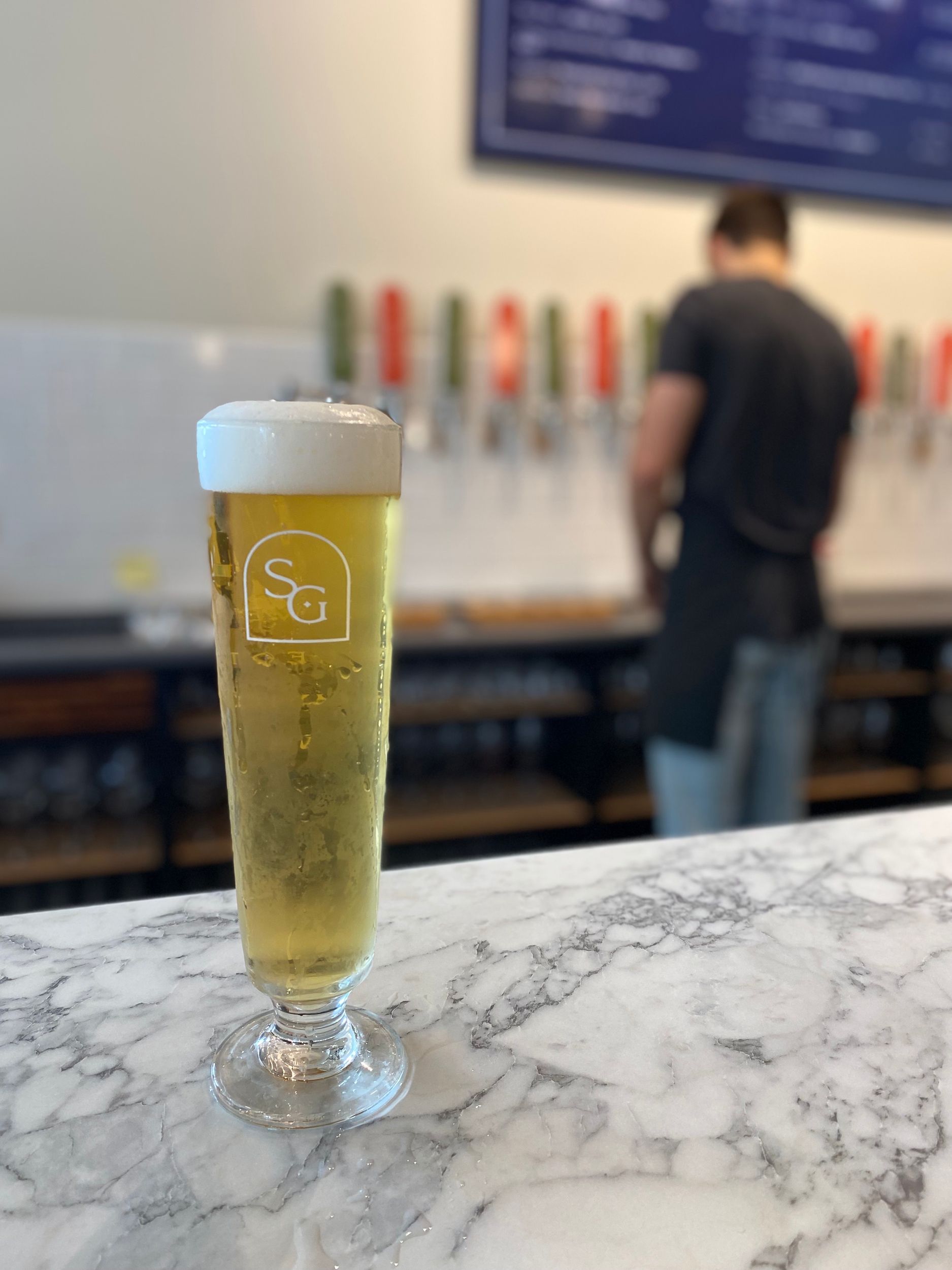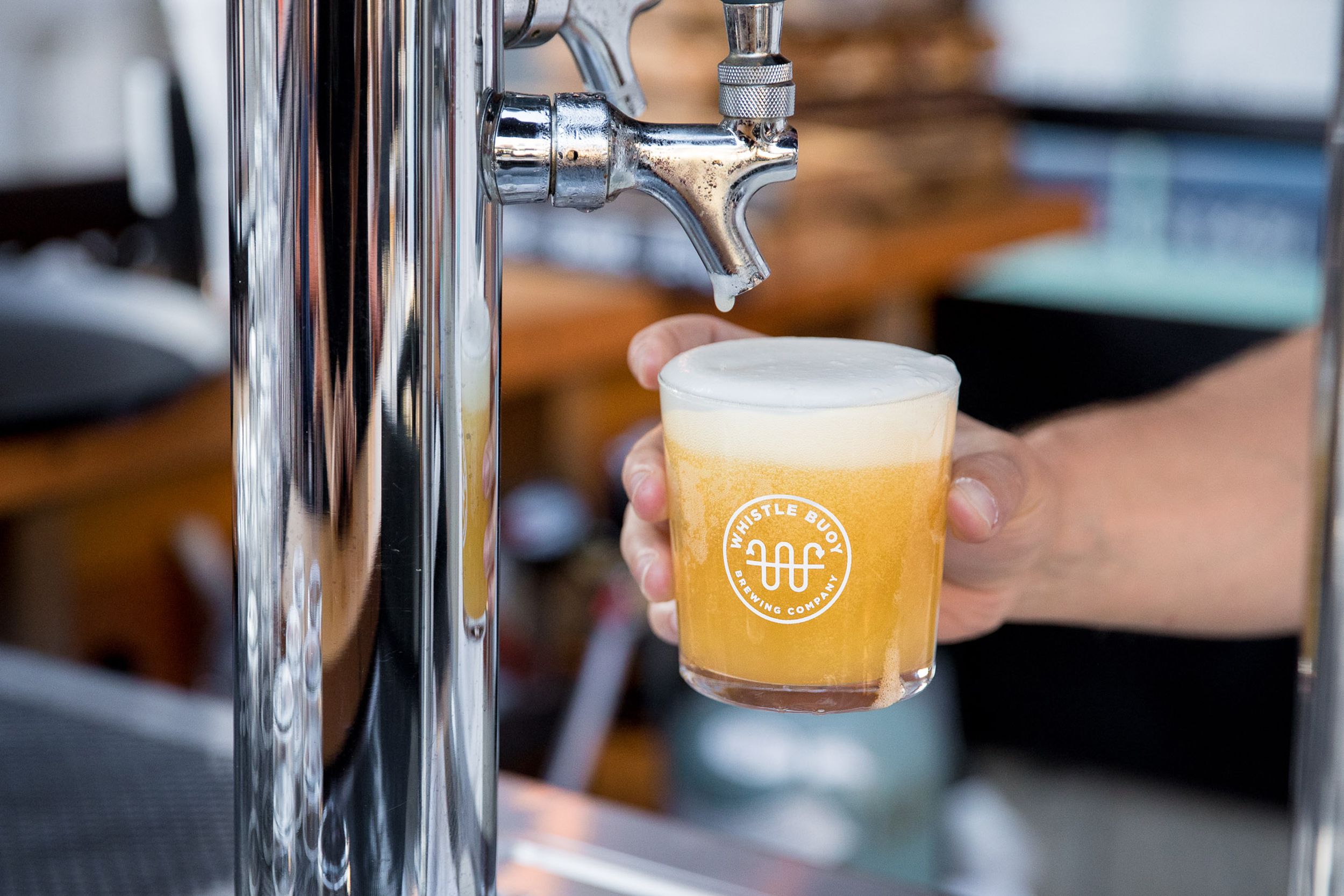Craft Beer Evolution
Here on Vancouver Island, we are blessed with more than 40 breweries, including Canada’s oldest microbrewery, Spinnakers Brewpub, which dates back to 1984, along with some of B.C.’s most successful (Phillips Brewing, Driftwood Brewery), plus a diverse assortment ranging from one-person operations to full-scale production facilities employing dozens of people. It’s pretty difficult to travel anywhere on the Island without finding a craft brewery nearby. In the past year alone, two breweries opened in Sidney (Beacon Brewing and Small Gods Brewing Co.), both in the same building just off the main drag; a farm-based brewery opened in Nanoose Bay (Rusted Rake Brewing); Fern & Cedar Brewing Company opened in Qualicum Beach; and Bayview Brewing is now giving those famous cinnamon buns some competition in Ladysmith.
Of course, craft beer is popular all over, not just on the Island. British Columbia is home to nearly 240 breweries. Market growth, which has averaged about 20 new breweries per year since 2012, wasn’t slowed much by the pandemic, and even though pundits have been talking about oversaturation for years, my list of breweries in the works is just as long as it has ever been.
 Lately, I’ve been thinking a lot about how craft beer has evolved. It probably has to do with the fact that it’s been a decade since I wrote my book, Craft Beer Revolution: The Insider’s Guide to B.C. Breweries. The first edition, which came out in 2013, had 50 breweries in it, which seemed like a lot at the time. At the Vancouver book launch, I jokingly teased Brent Mills, the brewmaster at Four Winds Brewing, for making it out of date by opening his brewery in Delta.
Lately, I’ve been thinking a lot about how craft beer has evolved. It probably has to do with the fact that it’s been a decade since I wrote my book, Craft Beer Revolution: The Insider’s Guide to B.C. Breweries. The first edition, which came out in 2013, had 50 breweries in it, which seemed like a lot at the time. At the Vancouver book launch, I jokingly teased Brent Mills, the brewmaster at Four Winds Brewing, for making it out of date by opening his brewery in Delta.
Craft beer means a lot of things to a lot of people. Obviously, first and foremost, it is a delicious beverage that many people enjoy consuming. It is also a hobby (or maybe an obsession)—some beer fans track all the beers they try using an app like Untappd or set goals to visit every brewery in the province. The craft beer industry provides gainful employment to thousands of B.C. residents. British Columbia even has its own fully dedicated training program: Kwantlen Polytechnic University’s two-year Brewing & Brewery Operations diploma, which has churned out more than a hundred graduates since it launched in 2014. And through the BC Ale Trail, which I helped launch back in 2015, beer has also become a major tourism draw.
The absolutely mind-boggling rate at which the industry has grown over the last decade occurred mainly because early in 2013 the provincial government made it possible for breweries (and distilleries) to open tasting rooms, a privilege wineries had been enjoying for years already. This was a paradigm shift. Prior to that, the business model for breweries was wholesale, focused on selling kegs to restaurants and pubs, and selling some packaged product to liquor stores. It was a low-margin approach, requiring an operation of a fairly significant size in order to be successful. But a tasting room offered a retail model: selling beer by the glass, which earns a much higher profit per litre. Although new breweries had to spend more money designing tasting rooms and hiring staff to work up front, this model was much more attractive to a small-scale entrepreneur. Of the nearly 200 breweries that have opened in B.C. since 2012, I honestly can’t think of one “production brewery” without a tasting room as its primary focus. Most of them didn’t even bother to sell their beer in kegs or to package their beer in cans or bottles at all, choosing to expand into more distribution as growth allowed for it, a very sensible business approach when a decent canning machine can cost $100,000 or more. 
This approach worked very well, leading to a new wave of small, locally focused breweries opening everywhere in B.C.—places like Whistle Buoy Brewing Co., Île Sauvage Brewing, and Category 12 Brewing in Greater Victoria. Some chose to offer a dining option as well, creating more of a restaurant experience; Twin City Brewing’s amazing pizza goes great with its award-winning beer line-up and helped put Port Alberni on the craft beer map.
For many of these new breweries, educating local consumers was important—encouraging all those Lucky Lager lovers to try something different. As a result, the culture of beer consumption has changed radically in recent years: instead of sharing pitchers or slurping pints, rarely deviating from a favourite brand, it’s much more typical now to see folks sampling flights of small glasses of different styles—maybe a sour, hazy IPA, lager and stout. This kind of beer exploration is conducive to socializing, chatting about the beers, comparing notes and perhaps pairing them with food. And it’s also a little healthier: today’s tasting culture is focused on smaller sips and moderation, unlike the old pitchers-and-pints approach, which often led to overconsumption.
And this has also helped craft beer’s market share to grow by making beer more interesting and accessible. People who might have gravitated towards wine or cocktails in the past now find a home in the beer spectrum, whether it’s sour beers, hazy IPAs, or something else that has spent some time aging in an interesting barrel. Some of these newer beer drinkers disdain traditional beer styles entirely, but absolutely love the trendiest new sour or hazy from Superflux Beer or Backcountry Brewing.
Another trend I am excitedly following is the farm-based brewery movement. British Columbia has long been a leader in this realm, thanks largely to the pioneering efforts of Crannóg Ales, which opened in 2000 in Sorrento, about half an hour east of Kamloops. Since then, several more breweries have opened on farms, including Locality Brewing in Langley, Barnside Brewing Co. in Delta, and The Beer Farmers in Pemberton. What I find so exciting is how these breweries explore the terroir of their farms through their beer. They grow their own barley, which makes up the majority of any beer’s recipe, as well as other grains and hops, and share the results at bucolic locations that help the drinker understand that beer is truly an agricultural product.
 If all of this is perhaps sounding too good to be true, I should temper it with a dose of economic reality. While the pandemic didn’t necessarily deter people from opening new breweries, it did lead to a handful of closures and business sales, and a lot of B.C.’s breweries are concerned about paying off debts they incurred just staying afloat during the darkest days of the lockdown. Sure, they adapted quickly by adding a canning line and delivery service, but those items came with a cost that eventually has to be paid. And add to that the challenges of staffing in the post-pandemic world, whether it’s simply finding people to hire or expectations for higher wages.
If all of this is perhaps sounding too good to be true, I should temper it with a dose of economic reality. While the pandemic didn’t necessarily deter people from opening new breweries, it did lead to a handful of closures and business sales, and a lot of B.C.’s breweries are concerned about paying off debts they incurred just staying afloat during the darkest days of the lockdown. Sure, they adapted quickly by adding a canning line and delivery service, but those items came with a cost that eventually has to be paid. And add to that the challenges of staffing in the post-pandemic world, whether it’s simply finding people to hire or expectations for higher wages.
So, a decade into the “craft beer revolution,” what does the future hold? Is the sort of growth we’ve seen over the past decade sustainable? Honestly, no: there is certainly a limit to how many breweries B.C. can support, but I don’t think anyone can actually say what that exact number is. I expect we will continue to see new breweries open, but maybe not at quite so dizzying a pace as we did in recent years. What excites me most about the future is to watch as brewers continue to improve their recipes, add new technologies and perfect their techniques. I can’t wait to see—and taste—what they come up with next.
.What is craft beer?Craft beer is incredibly hard to define. Many people have debated how to define this nebulous term over the past 40 years as the microbrewing movement morphed into the craft beer industry. An entire book has been written on the subject (UK writer Pete Brown’s Craft - An Argument: Why the term 'Craft Beer' is completely undefinable, hopelessly misunderstood and absolutely essential, published in 2020). In simplest terms, craft beer is made by an independent brewer using quality ingredients and traditional techniques. |
To plan your next brewery trip, find a Vancouver Island craft brewery at bcaletrail.ca/regions/vancouver-island or vancouverisland.travel/itineraries/craft-breweries-on-vancouver-island





